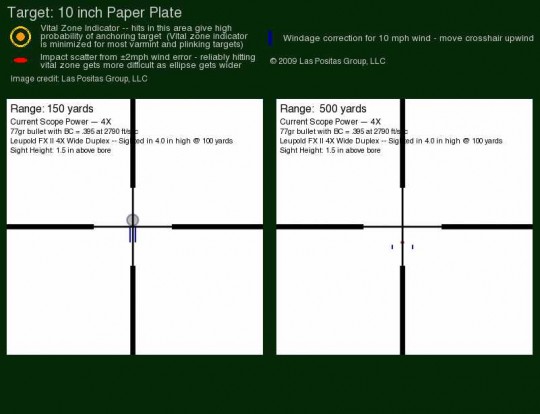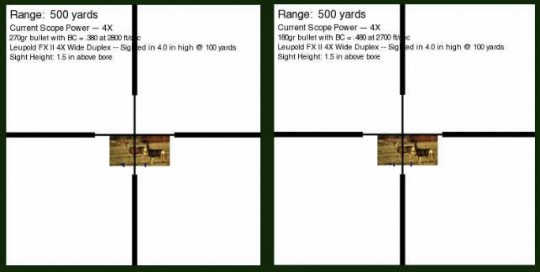How to practice for your shoulder crusher without crushing your shoulder!
“One rifle, one load” was the mantra my uncle Jerry often used when my dad and he debated about the best way to polish shooting skills for big game hunting. My father and I were on the side of using light loads in our deer rifles for practice and heavy loads for hunting. Since my dad was using a .375 H&H Magnum with hopes of an African safari one day and considered 300 yards a long shot, he could well understand the utility of multiple loads.
My uncle, on the other hand, used the .264 Winchester Magnum on a sporterized Enfield action for his deer and elk hunting with the ranges sometimes on the order of 600 yards. The comparatively light recoil of the .264 allowed him to use that 140 grain bullet for a wide variety of shooting without developing bad shooting habits. In the late fifties and early sixties, he was one of the first to tape ballistics charts on his rifle stock. As a result, he could really understand the performance of that load out to ranges beyond those which most of us could consider reasonable.
Fast forwarding by more than forty years, we see changes in ammunition and bullets that might allow a convergence of my dad’s and uncle’s interests. The development of high ballistic coefficient bullets in the .223, 6mm, 25, and the 6.5 calibers coupled with many new cartridges gives us the opportunity to have rifles in significantly different calibers and applications with effectively identical trajectories out to the ranges where my uncle hunted at.
There are multiple caliber combinations for your two or three gun battery that can be shown to have effectively identical trajectories over the ranges of interest. For example, let’s look at one manufacturer’s catalog offerings. In this case the Hornady catalog shows several cartrdge and bullet combinations that show very close to the same drop out to 500 yards.
We can see from the table that both the wind drift and trajectory for each of the six different combinations of cartridge and bullet are within five inches at 500 yards. This means that the .223 with the Hornady 75 gr BTHP has the potential of forming the basis for off season practice out to at least 500 yards for cartridges as powerful as the venerable .375 H&H Magnum!
The information presented is from laboratory test rifles with an industry standard barrel length of 24 inches. The congruence may remain close if the barrel length for both the hunting rifle and the practice rifle are the same. So, if your .375 or 30-06 has a barrel length of 20 inches, then the .223 should also have a barrel length of 20 inches. If you have a three gun battery, then your .308 or 30-06 should match the length.
Unmatched barrel lengths are possible, but attaining near-congruent trajectories may require different loads than those shown in this table.
Using trajectories from catalog information and calculated drift numbers by no means places us home free. The serious shooter needs to assure that each of his rifles are sighted in under the same conditions and to the same point of impact. The sight-in isn’t complete until the full battery is registered and sights adjusted to a common impact point at the longest range the shooter intends to hunt at. This last step may cause some divergence of an inch or two the 100 – 200 yard environment, but will assure that the trajectories are close enough at all ranges of interest.
As you can see from the images, the holdover needed to hit the dinner plate with the 75gr BTHP is the same as that needed to hit the deer’s vital zone with the 270gr 375 Magnum and the 180gr 30-06. This makes the .223 a very useful large game skill builder.
Remembering that the .375 Magnum is a dangerous game rifle, we naturally want to mount optics (or iron sights) that allow for quick, accurate shots in close. At the same time, we see that the cartridge is capable of some rather long shots. My Dad’s compromise was a simple 4X fixed power scope. He also practiced on jackrabbits. Most of his rabbit shooting was in the stalking mode, which meant that he had plenty of opportunities to get the crosshairs into the right spot on a fast moving animals. Naturally the feed back when hits happened was spectacular!
Today’s optics world offers a bewildering variety of choices – particularly among variable power scopes. One choice is to choose one with at least a 3 to 1 variation in power. Naturally, short range shooting favors 1X to 2X for the low power setting. Accurate and precise shooting at 500 yards, while possible with low power scopes or iron sights, suggests a high power setting of at least 4x so that rabbits or the details of large game aren’t obscured by the crosshairs. In the end, the compromise is in your hands with the balance set by both your understanding of the issues and what makes you comfortable.
Dangerous game hunting makes the shooter the one hunted often enough to be a consideration. This turnabout in roles evokes the well-founded admonitions to practice with your rifle until you have an instinctive feel in shouldering, sighting and shooting a powerful rifle. How does this advice work with using as many as three different guns – one for practice, one for deer and elk, and the third for dangerous game territory?
The best, likely most expensive, answer is to custom build a set of two or three rifles that have the same weight, handling characteristics, and optics. Handling characteristics includes fit of the rifle, length of barrel, center of gravity.
A subtle, but significant, issue is the length of the action. There are stories of folks getting into trouble with bolt action rifles because they failed to run the bolt over its full length of travel. For example, you will do a lot of shooting with the .223 and develop muscle memory for how far the bolt turns and how far back you need to pull to eject the spent cartridge and load the new round. A short action optimized for the .223 has a much shorter stroke than the magnum-length action needed for the .375 Magnum. All three rifles should have the same size action with the same bolt stroke required to eject and feed cartridges.
A somewhat less ideal alternative is to use completely different actions for each cartridge. One can develop the needed muscle memory by regular dry-fire practice with the large game rifle. The optics, however, should be identical because getting the right sight picture is critical at any range. This alternative will ease the cost of the battery a little by not requiring a custom build of matched rifles.
###
Copyright ©2010 Las Positas Group, LLC. All rights reserved.
Acknowledgements: Many thanks to Steve Hunter, an accomplished competitive shooter and hunter, including the odd African experiences, for his constructive criticism.
About the Author: Mr. Smith is an avid shooter and reloader who has competed in the NRA 2700 matches (.22, .38, & .45 bullseye shooting) as well as international style air pistol. He is a Vietnam Veteran and an NRA Life Member and a rifle and shotgun instructor helping with Boy Scouts of America shooting sports. He recently retired from the University of California after more than thirty years dedicated to research and development of a wide variety of weapons.




Leave a Reply
You must be logged in to post a comment.